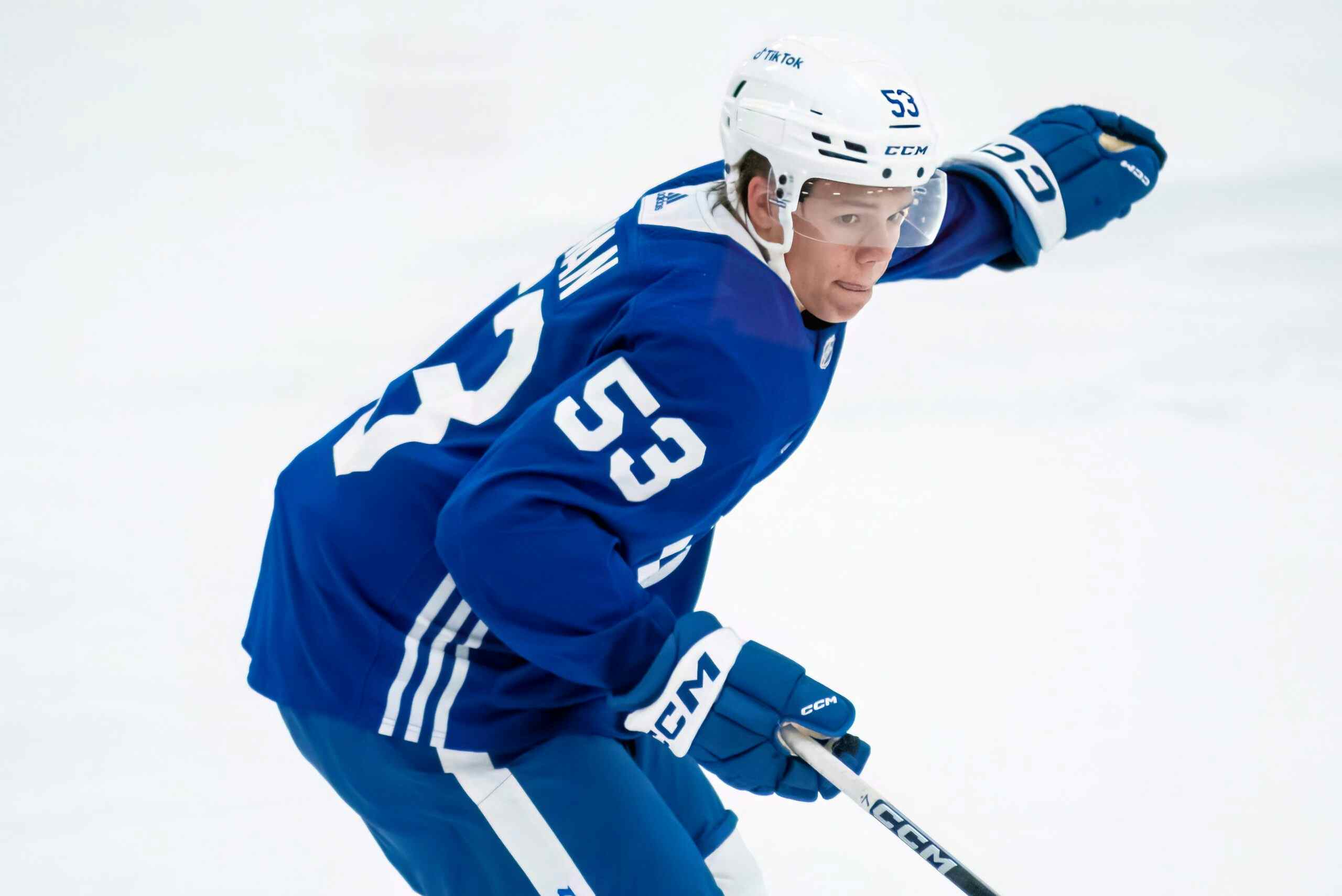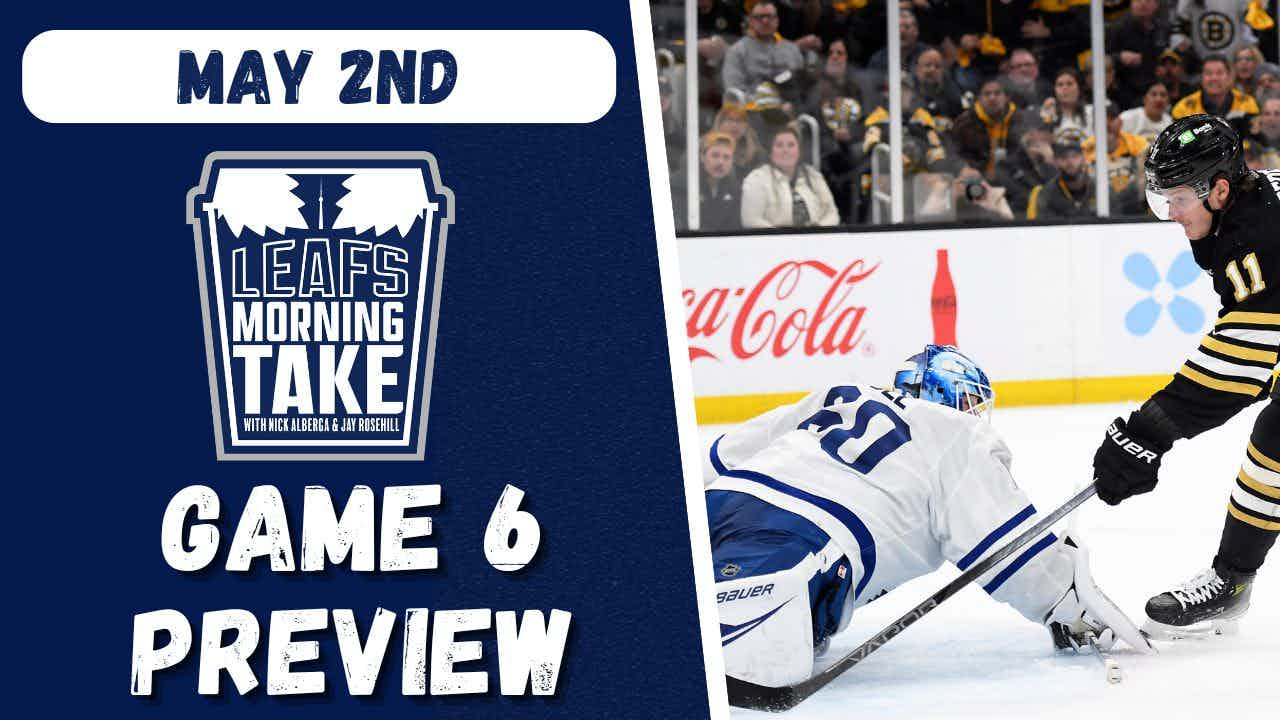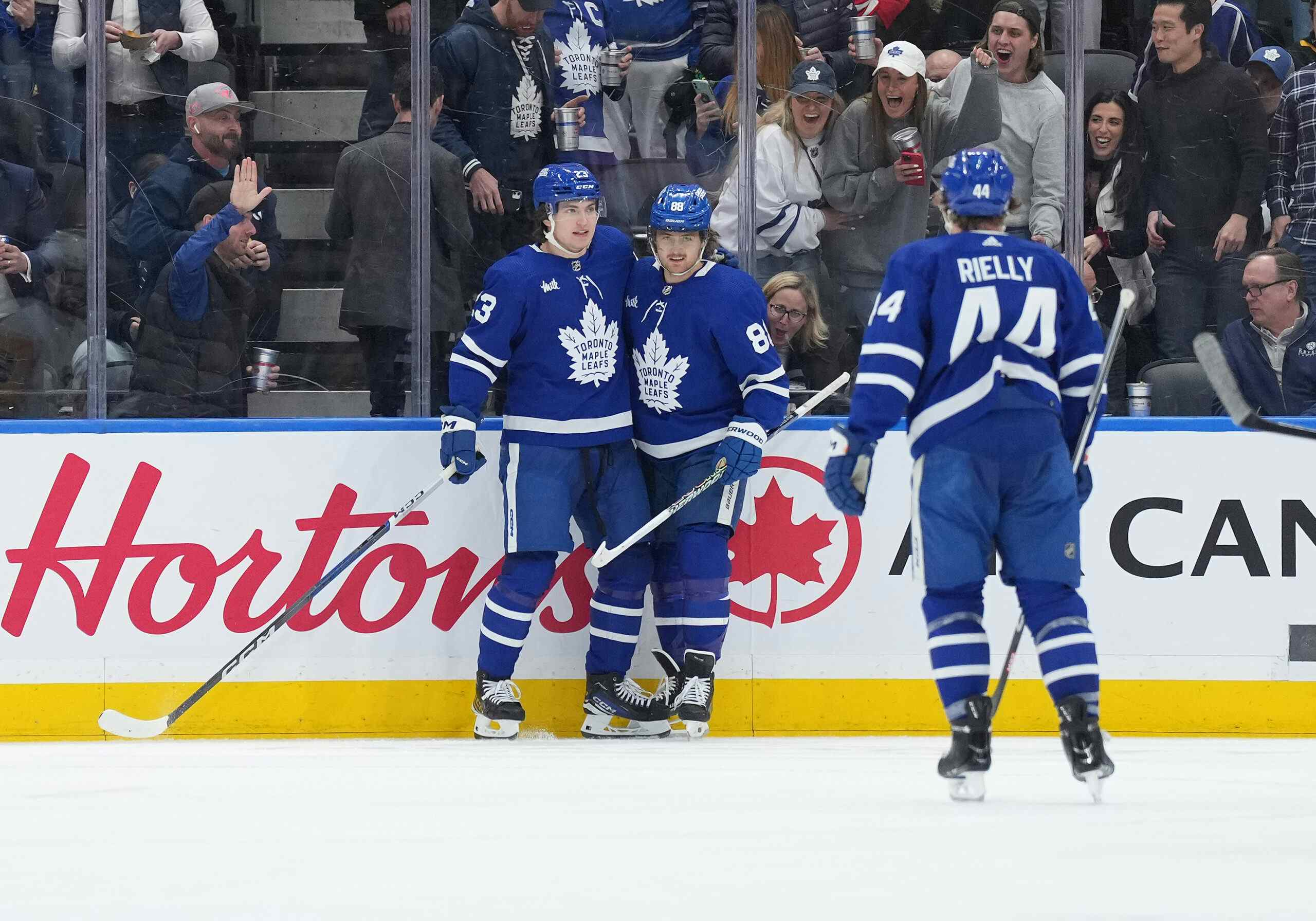Babcock’s History with Older Defensemen and How Phaneuf Fits In
By Jon Steitzer
8 years agoLast season there was plenty of talk about Dion Phaneuf
seemed destined to join the Detroit Red Wings, it seemed like a distinct
possibility at the trade deadline, and we were at the point where many of us
started debating whether taking back Stephen Weiss’ contract would make the
deal worth it. Ultimately Phaneuf never moved, hasn’t moved, and may never
move, but the Leafs have acquired Mike Babcock who may have been the primary
voice in the Wings organization looking to acquire Dion.
seemed destined to join the Detroit Red Wings, it seemed like a distinct
possibility at the trade deadline, and we were at the point where many of us
started debating whether taking back Stephen Weiss’ contract would make the
deal worth it. Ultimately Phaneuf never moved, hasn’t moved, and may never
move, but the Leafs have acquired Mike Babcock who may have been the primary
voice in the Wings organization looking to acquire Dion.
“I’m a fan of
Dion,” Babcock told media on Thursday. “I think he works hard and he
tries hard. I think…you have to help your leaders. I think that’s what your
job is (as coach), is to help them do things right.”
Mike Babcock isn’t short
on experience with working with aging defensemen. During his time in Detroit
the list of blueliners over the age of thirty included: Brad Stuart, Andreas
Lilja, Mathieu Schneider, Chris Chelios, Marek Zidlicky, Ruslan Salei, Niklas
Kronwall, Brian Rafalski, and of course, Nicklas Lidstrom. Babcock has an
excellent track record of guiding aging defensemen into retirement, and getting
the last worthwhile hockey out them, is there hope that he can make six years
of Dion Phaneuf at $7M per season more tolerable than we’d expect?
on experience with working with aging defensemen. During his time in Detroit
the list of blueliners over the age of thirty included: Brad Stuart, Andreas
Lilja, Mathieu Schneider, Chris Chelios, Marek Zidlicky, Ruslan Salei, Niklas
Kronwall, Brian Rafalski, and of course, Nicklas Lidstrom. Babcock has an
excellent track record of guiding aging defensemen into retirement, and getting
the last worthwhile hockey out them, is there hope that he can make six years
of Dion Phaneuf at $7M per season more tolerable than we’d expect?
Justin Bourne highlighted
some of reasoning behind why Babcock and Phaneuf are a solid match and why this
relationship may be given a chance to develop…
some of reasoning behind why Babcock and Phaneuf are a solid match and why this
relationship may be given a chance to develop…
“Mike Babcock is a serious, no-nonsense coach
who believes in hard work. You can say a lot of things about Phaneuf, but
there’s no denying he’s all three of those things too. It’s safe to say the
respect is mutual – remember how Detroit really wanted Phaneuf, then Babcock
left, then those talks died down? Not sayin’, just sayin’.”
While these things may be
dealing in less tangible aspects of building the team, these aren’t bad values
to instill in the lineup. I don’t doubt a desire for these qualities is absent
in any other coaches, but the potential for buy-in goes up with Babcock
compared to Carlyle or Horachek, and if Phaneuf has bought in, than he and the
team may be better for it.
dealing in less tangible aspects of building the team, these aren’t bad values
to instill in the lineup. I don’t doubt a desire for these qualities is absent
in any other coaches, but the potential for buy-in goes up with Babcock
compared to Carlyle or Horachek, and if Phaneuf has bought in, than he and the
team may be better for it.
Of course, we’re more
interested in the tangible aspects of how to get more out of an expensive, past
his prime defenseman than anything else. The team doesn’t need a second
Stephane Robidas, and it would be nice if the Leafs could get rid of the one
they have.
interested in the tangible aspects of how to get more out of an expensive, past
his prime defenseman than anything else. The team doesn’t need a second
Stephane Robidas, and it would be nice if the Leafs could get rid of the one
they have.

Looking at Dion’s usage
during his time as a Leaf it seems like there’s a few things worth noting. The
Leafs have been consistently been scaling back his 5v5 ice time (though still
relying heavily on him for special teams), and he’s very much a high event
player. Phaneuf’s Corsi Rel has been tied to the strength of his defensive
partners. His best years, by far came with playing with a healthy Carl
Gunnarsson or Francois Beauchemin, and he suffered as Gunnarsson’s hip
situation worsened and Phaneuf was forced to play with a revolving door of
young players and bounce back and forth from the left and right side of the
ice.
during his time as a Leaf it seems like there’s a few things worth noting. The
Leafs have been consistently been scaling back his 5v5 ice time (though still
relying heavily on him for special teams), and he’s very much a high event
player. Phaneuf’s Corsi Rel has been tied to the strength of his defensive
partners. His best years, by far came with playing with a healthy Carl
Gunnarsson or Francois Beauchemin, and he suffered as Gunnarsson’s hip
situation worsened and Phaneuf was forced to play with a revolving door of
young players and bounce back and forth from the left and right side of the
ice.
The truth seems to be that
Phaneuf isn’t really capable of carrying a top pairing, but with adequate
support he can be a decent half of it. Fortunately, we are beginning to see the
rise of Morgan Rielly and that may be the opportunity to move Phaneuf into a
more sheltered role, or potentially test the two players together, the answer
to what will be done with Phaneuf probably lies in what Babcock has done in the
past with the Red Wings.
Phaneuf isn’t really capable of carrying a top pairing, but with adequate
support he can be a decent half of it. Fortunately, we are beginning to see the
rise of Morgan Rielly and that may be the opportunity to move Phaneuf into a
more sheltered role, or potentially test the two players together, the answer
to what will be done with Phaneuf probably lies in what Babcock has done in the
past with the Red Wings.

The one player I have
absolutely no intention of comparing Dion to is Nicklas Lidstrom, and that’s
probably because Lidstrom is arguably the greatest defenseman that we’ve seen
over the past 20 years. That said, Lidstrom had a couple of rougher looking
years in his 30s before Rafalski arrived, and the year that Brad Stuart became
his defensive partner. And as you can see below, Brad Stuart is somewhat of a
possession deficit no matter where he’s played.
absolutely no intention of comparing Dion to is Nicklas Lidstrom, and that’s
probably because Lidstrom is arguably the greatest defenseman that we’ve seen
over the past 20 years. That said, Lidstrom had a couple of rougher looking
years in his 30s before Rafalski arrived, and the year that Brad Stuart became
his defensive partner. And as you can see below, Brad Stuart is somewhat of a
possession deficit no matter where he’s played.

He would see his numbers rebound in his
retirement season, but played in more sheltered situations with his new
defensive partner, Ian White.
retirement season, but played in more sheltered situations with his new
defensive partner, Ian White.

Brian Rafalski definitely
saw some of the best years of his career during his time with Mike Babcock, but
that’s also largely due to Rafalski spending the majority of his time in
Detroit with Nicklas Lidstrom. The Leafs certainly don’t have the opportunity
to pair Phaneuf with anyone of that caliber so the interesting story with
Rafalski mostly comes from his 2010-11 retirement season where Rafalski managed
to put up 44 assists (48 points) with his new defensive partner Jonathan Ericsson.
Certainly the Leafs have defensemen as talented as Jonathan Ericsson available
to play with Phaneuf, but it’s debatable that Phaneuf even now is as good as
Rafalski in his late 30s.
saw some of the best years of his career during his time with Mike Babcock, but
that’s also largely due to Rafalski spending the majority of his time in
Detroit with Nicklas Lidstrom. The Leafs certainly don’t have the opportunity
to pair Phaneuf with anyone of that caliber so the interesting story with
Rafalski mostly comes from his 2010-11 retirement season where Rafalski managed
to put up 44 assists (48 points) with his new defensive partner Jonathan Ericsson.
Certainly the Leafs have defensemen as talented as Jonathan Ericsson available
to play with Phaneuf, but it’s debatable that Phaneuf even now is as good as
Rafalski in his late 30s.
The interesting thing
about the 2010-11 season was that Babcock split up his top pairing of Lidstrom
and Rafalski, and paired Stuart with Lidstrom as his top pairing and Ericsson
with Rafalski as his second. Lidstrom’s numbers suffered while Rafalski thrived
although with a declined quality of competition. It seems reasonable to believe
that Phaneuf also has the potential to thrive in the NHL as a second pairing
defenseman, although there is still the small matter of identifying who on the
Leafs can be that top pairing if Phaneuf slides down the depth chart.
about the 2010-11 season was that Babcock split up his top pairing of Lidstrom
and Rafalski, and paired Stuart with Lidstrom as his top pairing and Ericsson
with Rafalski as his second. Lidstrom’s numbers suffered while Rafalski thrived
although with a declined quality of competition. It seems reasonable to believe
that Phaneuf also has the potential to thrive in the NHL as a second pairing
defenseman, although there is still the small matter of identifying who on the
Leafs can be that top pairing if Phaneuf slides down the depth chart.
As I alluded to earlier,
Phaneuf is a different type of player than either Lidstrom or Rafalski, and in
the case of Lidstrom definitely not in same class of talent, and with Rafalski,
he at best matches up to some of Rafalski’s later years well past his prime.
However, recently Mike Babcock has worked with a defenseman who’s style is more
comparable to Dion, and that player is Niklas Kronwall.
Phaneuf is a different type of player than either Lidstrom or Rafalski, and in
the case of Lidstrom definitely not in same class of talent, and with Rafalski,
he at best matches up to some of Rafalski’s later years well past his prime.
However, recently Mike Babcock has worked with a defenseman who’s style is more
comparable to Dion, and that player is Niklas Kronwall.
Kronwall, like Dion, is a
big hitter who contributes offensively, but was at his best when he was the
second or third best defenseman on the team. Like Phaneuf, Kronwall has
recently seen a scaling back of his 5v5 time so that the team can utilize him
more on special teams, but unlike Phaneuf he has benefited from having a
consistent partner over the past few seasons and he’s stuck with Jonathan
Ericsson when Ericsson has been healthy enough to be in the lineup.
big hitter who contributes offensively, but was at his best when he was the
second or third best defenseman on the team. Like Phaneuf, Kronwall has
recently seen a scaling back of his 5v5 time so that the team can utilize him
more on special teams, but unlike Phaneuf he has benefited from having a
consistent partner over the past few seasons and he’s stuck with Jonathan
Ericsson when Ericsson has been healthy enough to be in the lineup.

The Ericsson-Kronwall
pairing is many ways similar to the Gunnarsson-Phaneuf or Beauchemin-Phaneuf
pairings, as Ericsson is the stronger positional, lower risk player, but still
capable of doing more than chipping the puck out or being as equally high risk.
Prior to this season’s sharp drop off, the last time Kronwall’s relative possession
numbers suffered were when it was his turn to be Brad Stuart’s defensive
partner in 2011-12, and in both seasons he had positive CF%, as did most Wings.
pairing is many ways similar to the Gunnarsson-Phaneuf or Beauchemin-Phaneuf
pairings, as Ericsson is the stronger positional, lower risk player, but still
capable of doing more than chipping the puck out or being as equally high risk.
Prior to this season’s sharp drop off, the last time Kronwall’s relative possession
numbers suffered were when it was his turn to be Brad Stuart’s defensive
partner in 2011-12, and in both seasons he had positive CF%, as did most Wings.
The biggest challenge that
Mike Babcock is going to face with Phaneuf is matching him with a partner, but
also finding an opportunity to move him back into a second pairing. If you view
Morgan Rielly as the top pairing guy and want to use him separate of Phaneuf
you are also taking away the only defensive partner that Phaneuf had that he
was able to combine with for a CF% of 50% (albeit in 66 minutes of ice time
together). The next most successful partner from last season was Jake Gardiner
at 48.9% CF%, but pairing higher risk players together may be a risk, even in a
second pairing setting. Roman Polak and Stephane Robidas not surprisingly didn’t
do so well with Dion, so the best option outside of being on the top pairing
with Rielly may come in the form of Martin Marincin, who’s style is similar to
that of Carl Gunnarsson or Jonathan Ericsson.
Mike Babcock is going to face with Phaneuf is matching him with a partner, but
also finding an opportunity to move him back into a second pairing. If you view
Morgan Rielly as the top pairing guy and want to use him separate of Phaneuf
you are also taking away the only defensive partner that Phaneuf had that he
was able to combine with for a CF% of 50% (albeit in 66 minutes of ice time
together). The next most successful partner from last season was Jake Gardiner
at 48.9% CF%, but pairing higher risk players together may be a risk, even in a
second pairing setting. Roman Polak and Stephane Robidas not surprisingly didn’t
do so well with Dion, so the best option outside of being on the top pairing
with Rielly may come in the form of Martin Marincin, who’s style is similar to
that of Carl Gunnarsson or Jonathan Ericsson.
Right now it’s pretty
clear that the Leafs aren’t yet to where they want to be with defence, a point
that Mike
Babcock has acknowledged recently:
clear that the Leafs aren’t yet to where they want to be with defence, a point
that Mike
Babcock has acknowledged recently:
“We’ve got to find a marquee
defenceman to help us out, for sure. We’ll do that when the time is right.”
If the time isn’t right this
summer, (it probably won’t be) it likely means once again overextending Dion
Phaneuf, either by using him in the top pairing or by giving him a
non-complimentary partner. In the initial stages of the rebuild that seems
unimportant, but if the Leafs are looking to salvage the later years of his
contract, it’s not a need that can be ignored for long. Mike Babcock has done
well with his older defencemen and with a consistent partner and an opportunity
to play within the limits of his game, it seems entirely possible that success
could continue with Phaneuf. We’ll just need to come to terms with the fact his contract is less than ideal.
summer, (it probably won’t be) it likely means once again overextending Dion
Phaneuf, either by using him in the top pairing or by giving him a
non-complimentary partner. In the initial stages of the rebuild that seems
unimportant, but if the Leafs are looking to salvage the later years of his
contract, it’s not a need that can be ignored for long. Mike Babcock has done
well with his older defencemen and with a consistent partner and an opportunity
to play within the limits of his game, it seems entirely possible that success
could continue with Phaneuf. We’ll just need to come to terms with the fact his contract is less than ideal.
Recent articles from Jon Steitzer





